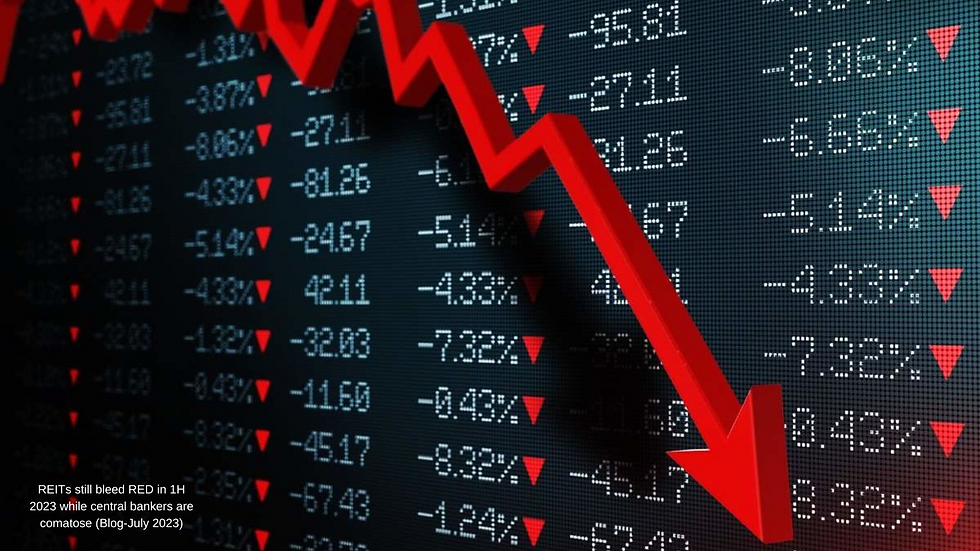PROFITING FROM “ASIA’S NORMALISATION” ERA
- by Gabriel Yap

- Nov 18, 2017
- 4 min read
07/2015-
I had always wonder – What is it like to retire before 40 years old and enjoy the world? What is it like to smell the roses everyday and enjoy every sip of my cappuccino?

I summoned up the courage to do just that after enjoying the 2007 bull run and retired from the hectic world of stockbroking and investment banking in 2009 to travel the world and devote myself to philanthrophy work. Right now, I have travelled to more than 76 countries and looking to cover half the world before the end of the decade.
Not surprisingly, up to now, I still get a lot of wow and awe when I relate my life story at public lectures and talks.
Wow and awe are actually something that gnaw at me when I spent more time in many Asia’s countries to imbue their culture and social development. At the start of my stockbroking and investment banking career, I rode the upward wave of “Asia’s rising” in the 1980s. I learned then that taking an Asian bull (market) by its horns and riding through it can bring huge fortune. I also learned in 1989 and then again during the Asia Financial Crisis in 1998 that Asian markets, particularly those with weak current account deficits and high government debts and highly dependent on foreign funds, are especially vulnerable when the markets come to roost as foreign funds evaporate. Institutional moneys only flow to where there are fertile soil to make money.
It has been more than 2 decades and I think that Asia has now entered into a “great normalization” era. This refers to a period of sustained macroeconomic growth, greater economic impact of the middle-class and lower volatility of Asian markets.
These trends would affect second-derivative factors like more sustained corporate profit growth, albeit at lower than the “go-go days” 20 – 40% rates, more sensible economic and fiscal policies and better corporate governance, all key traits that long-term investment funds covert for. These would provide the backdrop to stronger performance for Asian equities over the next decade.
There are a few investment themes that will guide my core portfolio picks, riding on the “Asia’s Normalisation” theme –
Market mis-perception
Regional growth beneficiaries
Great free cash flow generators, FCF
To illustrate, let’s have a look at one of my core holding – Singapore Telecommunication
Market mis-perception
Heightened completion from the potential entry of a fourth mobile operator in Singapore recently sent Singtel share price into a tail-spin recently – it spun downwards from $4.53 on 15th Apr 2015 to $3.98 on 2nd Jun 2015 or 12.1% in just 1.5 months.
To me, it represented one of the best “buy on dips” chances so far this year.
If one analyses the financial commitments of a 4th mobile operator, it is clear that a minimal investment cost of $600 -$800 million (best market estimates) is required to meet the high standards stipulated by the authorities. The fastest breakeven time is estimated to be 3 – 5 years. Thus, if one uses M1 capital expenditure of $120 million per year to project for the 4th mobile operator, the minimum required to kick-start such a business would be a staggering $960 million (based on 3 year breakeven) - $1.4 billion (based on 5 year breakeven)!
Let me give you an out-of-the-box comparison –
A minimal investment sum of $1 billion can buy a one-third stake or 312 million shares in M1, the smallest mobile operator. M1’s average dividend yield for the past 5 years hovered at 5%. Simplistically, over 5 years, an investor would have reaped $250 million in dividends for a $1 billion investment.
So at $1 billion investment, is it not better financially, to take a one-third stake in the smallest mobile operator M1 rather than to kick-start a 4th mobile operator which can possibly breakeven only after 5 years (or even longer)?
So is it real risk or market mis-perception of risk?
Beneficary of regional growth
Singtel registered a net profit of $3.78 billion for its FY2015 results, up 3.5%. Growth would have been a more significant 6.2% measured in constant currency terms.
Operating revenue grew 2.2% to $17.2 billion despite a weaker A$ vs S$. EBITA declined 1.3% to $5.1 billion but in constant currency terms, it would have shown a 1.3% improvement instead.
It’s Australian business under Optus, enjoyed double-digit growth in its latest quarter 4Q2015 from both higher ARPU and subscriber growth despite increased competitive intensity as competitors jump on each other to offer competition packages on data usages and for switching.
Singtel’s regional mobile associates like Telkomsel, Airtel, AIS and Globe continued to register strong custormer growth with increased smartphone penetration and data usage.
It continues to be a prime regional growth beneficiary.
Great FCF generator
Singtel’s operating CF was $5.787 billion for FY2015. Accounting for its various capex expenditure and purchase of subsidiaries and associates of $2.118 billion, the FCF would be $3.669 billion.
I would have preferred that Singtel not invest so much in its Digital Life business which started 3 years ago and pay the excess FCF as higher dividends to shareholders.
Nonetheless, it remains as one of my core holdings as I expect it to continue to ride the “Asia’s normalization” theme.




Comments